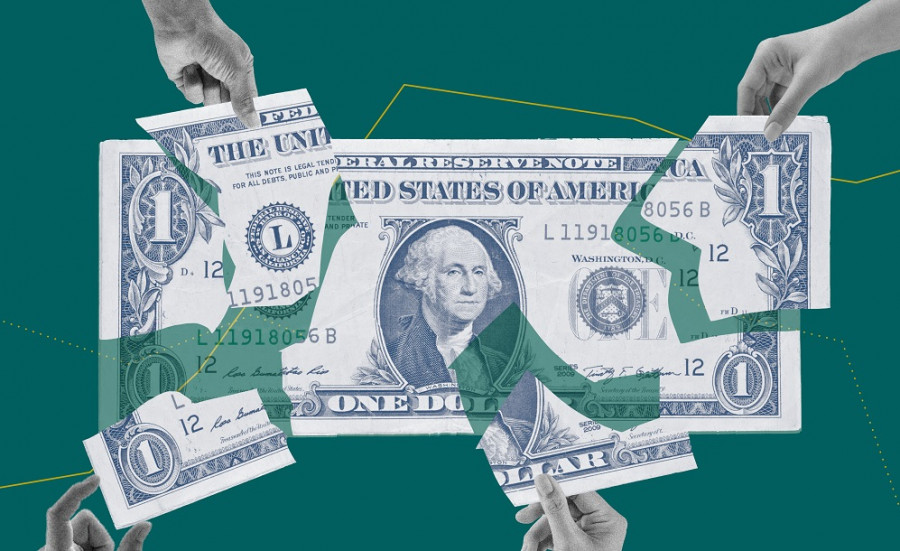Political fundamental factors often have a limited lifespan—not in terms of their impact but in the duration of their influence. Markets tend to react impulsively and sharply to political events, but they quickly price them in. Such events flare up brightly but fade just as swiftly.

Donald Trump's election is one such fundamental factor. However, in this case, the news shock was so intense that its aftershocks lingered for two weeks, especially as Trump added fuel to the fire with his staffing decisions. Yet, those two weeks have passed, and the market is gradually cooling off. The initial Trump effect has faded, leading the US dollar index to reverse downward, reflecting waning demand. Major dollar pairs adjusted accordingly. For example, EUR/USD buyers managed a notable 100-point correction. The word "correction" is the key here. The current fundamental backdrop still does not support a sustained price increase—not only because Trump is likely to make headlines again or because the Federal Reserve has tightened its stance, but also due to potential euro weakness.
After the Republican's victory in the US presidential elections, the likelihood of a 50-basis-point ECB rate cut at the December meeting went down, with markets refocusing on inflation risks. However, the risk balance has now shifted from inflation concerns to worries about economic growth. Still, the 50-basis-point rate cut scenario remains on the table. For instance, ECB member Gabriel Makhlouf (Ireland's central bank governor) recently noted that while such a move is possible, it would require "compelling arguments."
In my view, weak PMI indices could play a decisive role here. The data is due this Friday (on November 22), just three weeks before the ECB's December meeting. If the report falls into the red zone, the probability of a 50-basis-point rate cut will significantly increase, putting additional pressure on the euro.
Particular attention will be on German data. According to preliminary forecasts, Germany's manufacturing PMI is expected to remain in contraction territory in November, hovering near its October level (43.1 vs. 43.0). The services PMI is predicted to stay above the 50-point threshold with a minimal increase (51.6 vs. 51.8). This is the general forecast, but not all analysts agree. For example, ING experts believe Germany's figures may fall short of these estimates. In that case, EUR/USD declines would be driven not by dollar strength but by euro weakness.
Meanwhile, discussions about a pause at the Federal Reserve's December meeting continue. According to CME FedWatch data, the probability of the rate remaining unchanged in December has risen to 40%. Some currency strategists are already confident that the Federal Reserve will maintain the status quo at its next meeting. Analysts at Nomura, for instance, predict that the Fed will hold off until at least March (and they forecast a total 50-basis-point rate cut in March and June).
However, there is another viewpoint. Experts at Bank of America suggest a 25-basis-point rate cut in December, followed by two additional 25-basis-point cuts in March and June, before the Fed pauses until the end of 2025.
While the market lacks consensus on the Fed's future actions, one thing is clear: dovish sentiment has weakened considerably. Most believe the Fed will pause or halt rate cuts, with debates focusing only on the timing of this decision.
Can EUR/USD sustain growth in such conditions?
In my opinion, no. Therefore, discussing a trend reversal is, to put it mildly, premature. At the same time, there are no fundamental drivers for EUR/USD to breach 1.1000 either. Additional catalysts are needed—such as stronger confidence in a 50-basis-point ECB rate cut (which disappointing PMI figures could bolster) or an uptick in hawkish sentiment regarding the Fed. Fed policymakers this week may provide support for EUR/USD sellers, with notable attention on Michelle Bowman (November 20), who voted against a 50-basis-point cut in September but supported a 25-basis-point reduction in October. Her remarks could trigger increased volatility for the EUR/USD pair.
Trading strategy for EUR/USD
Short positions on EUR/USD are advisable if sellers break below the 1.0560 support level (the middle Bollinger Bands line on the H4 timeframe). In this case, the instrument would fall between the middle and lower Bollinger Bands lines and below all Ichimoku indicator lines, forming a bearish "Line Parade" signal. The primary downside target is 1.0500 (the lower Bollinger Bands line on the four-hour chart). Targeting 1.0400 is risky for now due to the unclear informational background, making it difficult for sellers to consolidate below 1.0500.

















